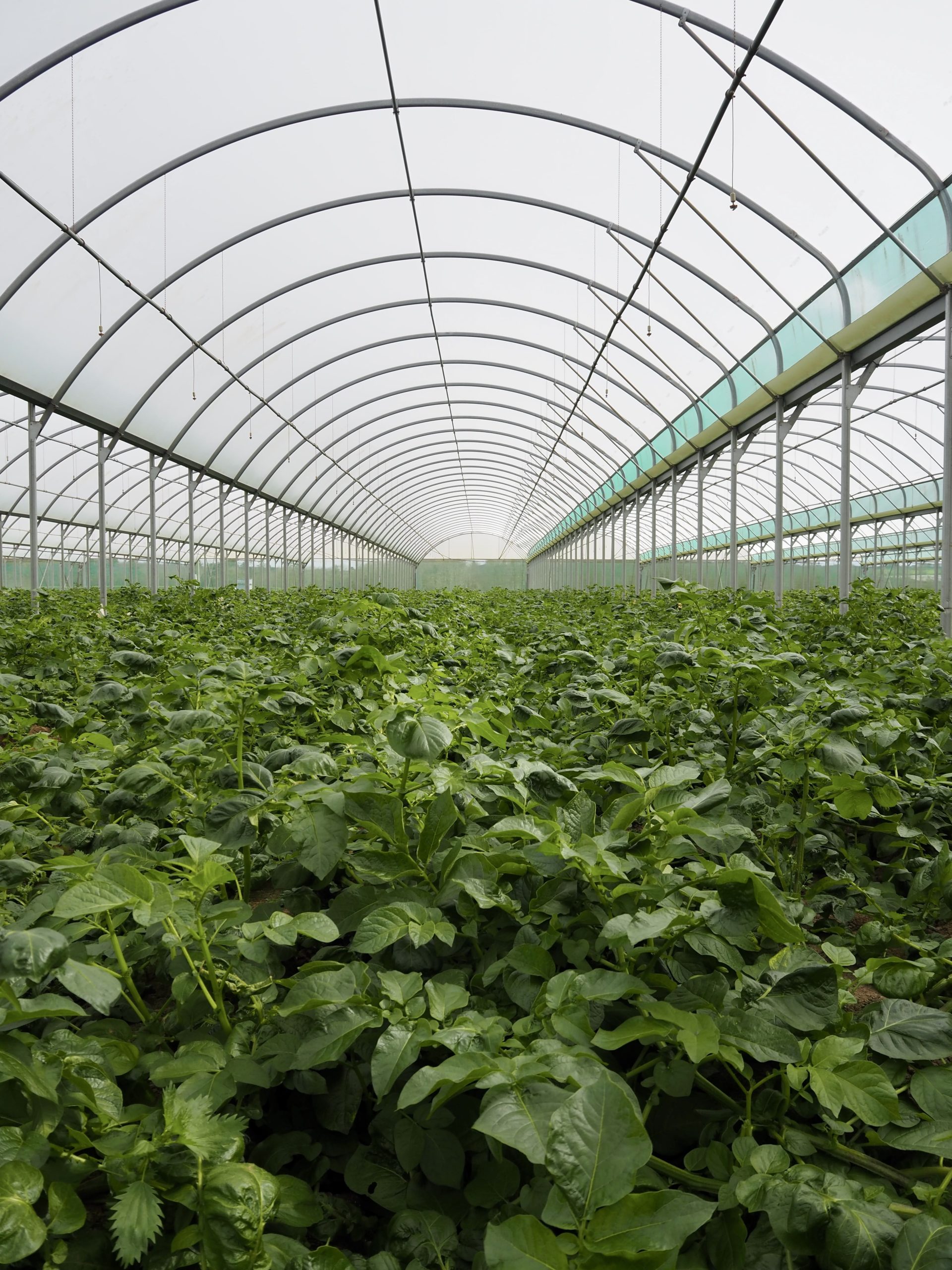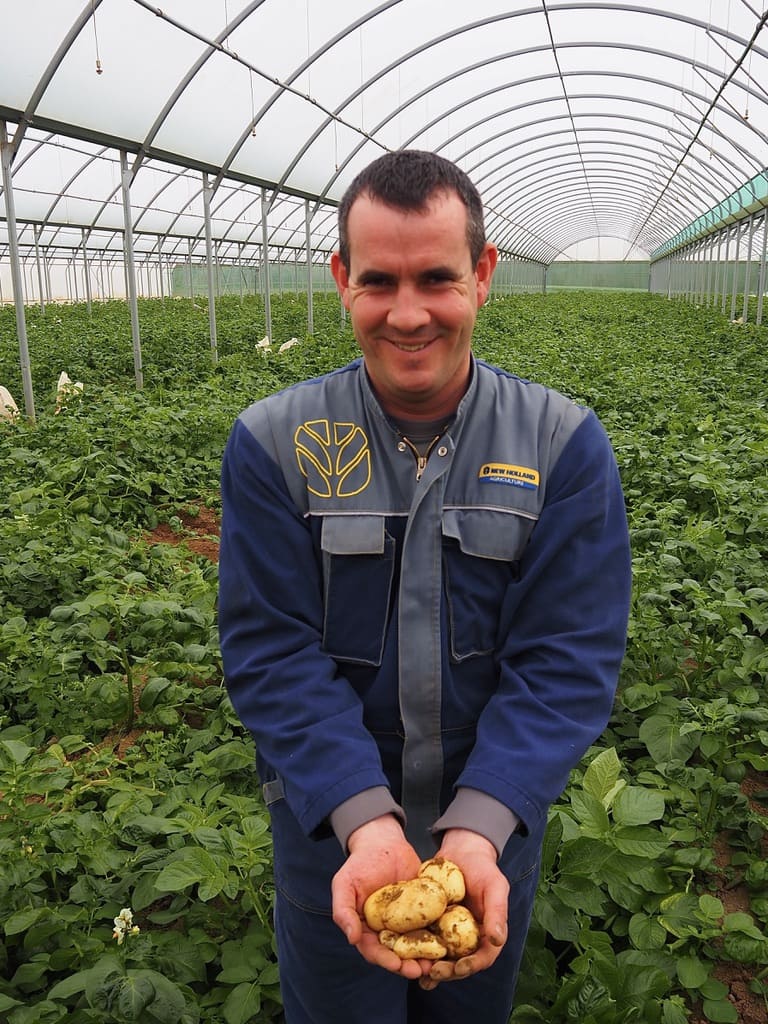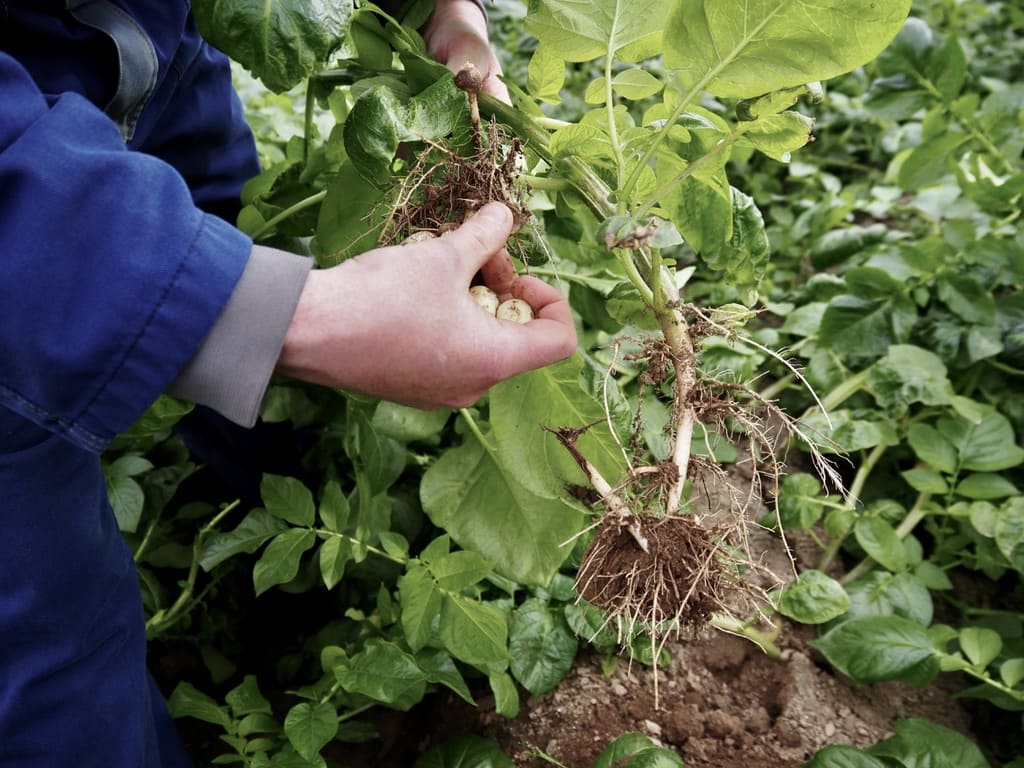Early potatoes herald the end of winter. These early potatoes, the first of the year to be harvested, are popular with consumers as soon as the days get longer and sunnier. They’re ideal for accompanying the first barbecues as well as the traditional Easter leg of lamb.
To find out more about this product, we went to meet Jordane Cadiou, an early potato producer based in Plounevez-Lochrist (pronounced Plounévé-Lokrist), in North Finistère (29).
Sweet and melt-in-the-mouth, the early potato star of spring
Early potatoes are early varieties, harvested before they are fully ripe. Not all the sugar has yet turned to starch, which goes some way to explaining their incomparable flavour and melt-in-the-mouth flesh. In Brittany, early potatoes are grown under cover, mainly in cold greenhouses, also known as ‘chapels’ because of their large volume.
In the greenhouses of Jordane Cadiou, a producer, member of Prince de Bretagne, the tops are still green, and some of the flowers are still present, but the harvest began a few days ago.
“The early potato is a spring staple. They’re very much in demand at Easter. This year, Easter comes very early, but we had plenty!”
Every year, Jordane plants his potatoes between 10 December and 5 January, and harvests them between 20 March and the end of April, in time for Easter and the first barbecues.
Starlette and other varieties
Jordane has chosen to grow the Starlette variety, a fitting name for this little queen of spring. Like all varieties of early potato, Starlette has a melt-in-the-mouth texture, is easy to cook and has a sweet taste. Its very thin skin means it can’t be peeled.
“We plant and harvest by hand. To avoid damaging the produce, we keep handling to a minimum. The potatoes are packaged straight after harvesting.”
Jordane grows his new potatoes in an open greenhouse. To protect the plants from the winter cold, protective tarpaulins are laid over the crops until February. This production requires an average of 80 hours’ work per hectare.
Other growers have opted for closed cold greenhouses to limit draughts. Still others have rehabilitated old glass tomato greenhouses that no longer meet today’s technical production criteria. Although these glasshouses are obsolete for tomatoes, they are ideal for producing extra-prime potatoes, thanks to their better thermal insulation.
The different varieties, production calendars and growing methods adopted by growers mean that early potatoes are now available from February to June. Other varieties will take over from mid-May.
Whether you prefer leg of lamb or barbecue, Jordane has some cooking advice for you:
“Starlette is small, so you can leave it whole or cut it into pieces. Don’t peel it, just put it straight into the pan with some… salted butter”.
A simple recipe from Breton pure butter*. Now all you have to do is try it out, or get your customers to try it out.
NB: In France, Brittany is one of the rare regions, perhaps the only one, where the inhabitants eat semi-salted butter or butter with salt crystals. This particularity is so important to the Bretons that it has given rise to the expression “Breton pur beurre” (Breton pure butter), which refers to a person who claims to be of Breton origin and culture.



